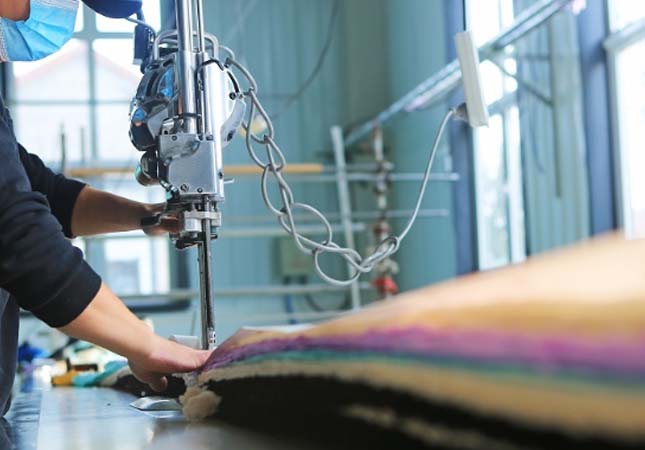The textile industry in Bangladesh has undergone remarkable growth since its establishment in the early 20th century. Presently, it stands as a pivotal force in the nation's economy, generating employment opportunities for millions and contributing billions of dollars through exports.
Beginning & Growth
The inception of the textile machinery in Bangladesh traces back to the early 20th century, when the British East India Company established the country's first jute mill in 1855. Jute served as the primary textile product until the 1970s, when the government turned its attention towards nurturing the readymade garment (RMG) industry.

In the late 1970s, a group of enterprising businessmen ventured into exporting shirts and T-shirts to Europe and the United States, marking the modest beginnings of the RMG sector. At that time, the industry was relatively small, comprising only a few factories and a limited workforce of a few hundred individuals.
Significant strides were taken in the 1980s, as the government implemented measures to incentivize private sector investment in the textile industry. Relaxing import regulations for raw materials and machinery streamlined the establishment of factories, setting the stage for substantial growth.
By the mid-1980s, the RMG industry gained momentum, and exports soared to a noteworthy $40 million. The subsequent decade witnessed a rapid surge, with exports surpassing the impressive milestone of $1 billion in 1995. The industry's upward trajectory persisted throughout the 2000s, culminating in exports exceeding $10 billion by 2007.
Despite its remarkable progress, the textile industry in Bangladesh has encountered various challenges along the way. Foremost among these is the dearth of investments in technology and innovation. The prevalence of outdated machinery in most factories has resulted in reduced productivity and compromised product quality.
The textile industry in Bangladesh has grappled with multiple hurdles in recent times. One significant challenge pertains to the persistently low wages paid to workers, leading to numerous labor protests and strikes throughout the years.
From its early days of hand-loom operations to the advent of modern factories, the developmental trajectory of Bangladesh's textile industry is a captivating saga of innovation, transformation, and adversities. This blog endeavors to unravel the growth and evolution of this industry, tracing its humble origins to its present stature as a prominent player in the global textile market.
One of the foremost challenges confronting the textile industry in Bangladesh lies in the realm of intense competition from other countries, particularly China, India, and Pakistan. This stiff competition has resulted in a decline in Bangladesh's share of the global textile market, shrinking from 3 percent in 2000 to 2 percent in 2010.
Additionally, rising labor costs pose a pressing challenge for Bangladesh's textile industry. Wages have been steadily escalating at a rate of 10-15 percent per year over several years, rendering Bangladesh less competitive compared to neighboring countries like Vietnam and Cambodia.
Moreover, the industry faces infrastructure-related hurdles within the country. Dilapidated roads and bridges impede the smooth transportation of goods to the market, while frequent power outages disrupt production processes.
Notwithstanding these challenges, the future of Bangladesh's textile industry shines brightly. The government has embarked on several initiatives to modernize the industry, and numerous companies are investing in advanced technology and cutting-edge textile machinery. Furthermore, the industry is progressively shifting towards more sustainable and eco-friendly practices, a commendable stride forward.
Government Support for the Growth of Bangladeshi Textiles
The textile industry in Bangladesh has experienced a rapid surge in recent years, owing in large part to substantial government support. The government's assistance has taken the form of financial aid, subsidies, and tax incentives. Moreover, considerable investments have been made in infrastructure development, facilitating the establishment and operation of businesses across the country.
This comprehensive support from the government has resulted in a remarkable boom within the Bangladeshi textile industry. Textile exports have witnessed significant growth, positioning the industry as one of the foremost earners of foreign currency for the nation. This growth has not only generated employment within the textile sector but also created jobs in related industries, including transportation, logistics, and both upstream and downstream sectors that contribute to the textile supply chain.
The expansion of the Bangladeshi textile industry has played a pivotal role in driving overall economic development within the country. It has contributed to poverty reduction and an improvement in living standards for millions of individuals. Notably, the industry has emerged as a vital source of employment for women, who constitute a substantial portion of the workforce.
In conclusion, the developmental journey of Bangladesh's textile industry stands as a remarkable success story. Despite encountering various challenges such as infrastructure deficiencies, technological limitations, and global economic downturns, the industry has achieved an impressive growth rate over the past few decades. This transformation has propelled Bangladesh from an agrarian economy to an industrialized one, generating employment opportunities and making significant contributions to the country's GDP.
Nonetheless, the industry continues to face certain challenges, including environmental sustainability, labor rights, and market competitiveness. These obstacles necessitate sustained investments in technology, infrastructure, and human capital development. Effective regulation and policy frameworks are also crucial in addressing these challenges. However, with its immense potential for growth, the textile industry in Bangladesh remains a pivotal sector, serving as a model for other developing countries aspiring to achieve economic development and alleviate poverty.
SUNTECH Textile Machinery has the range of products encompasses almost all fabric types, including but not limited to pinking machine, loom machine, weaving machine, beam truck, fabric cutting machine, motorized beam trolley, beam storage, and fabric inspection machine. SUNTECH Textile Machinery continues to lead the textile industry with our innovative approach and extensive experience. Welcome quotes and cooperation opportunities from you!




